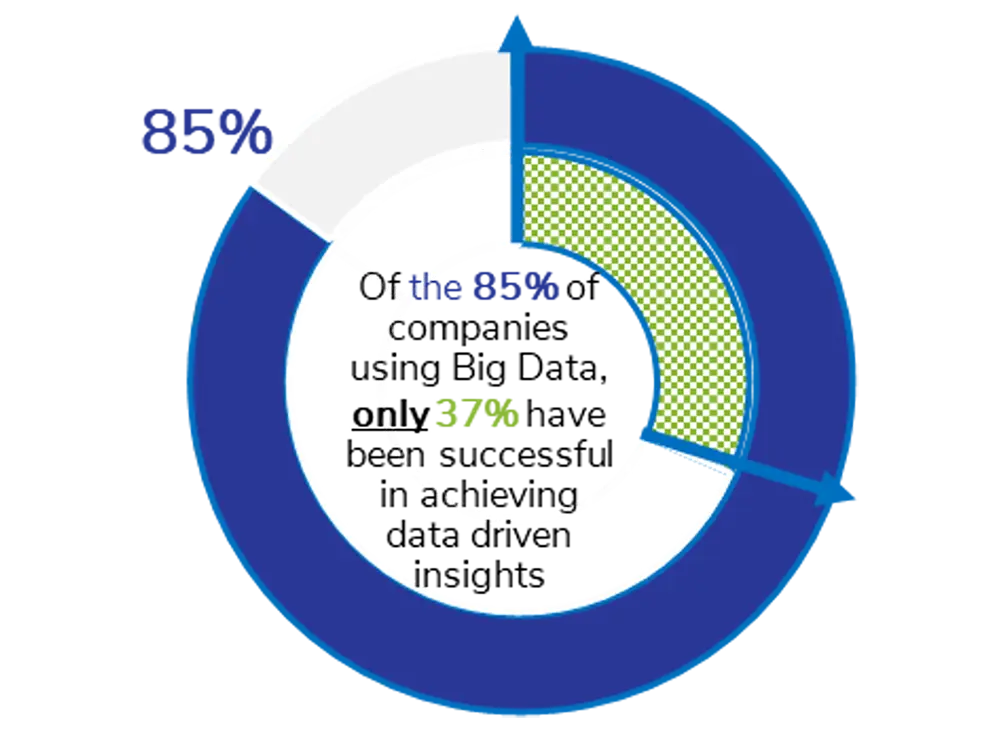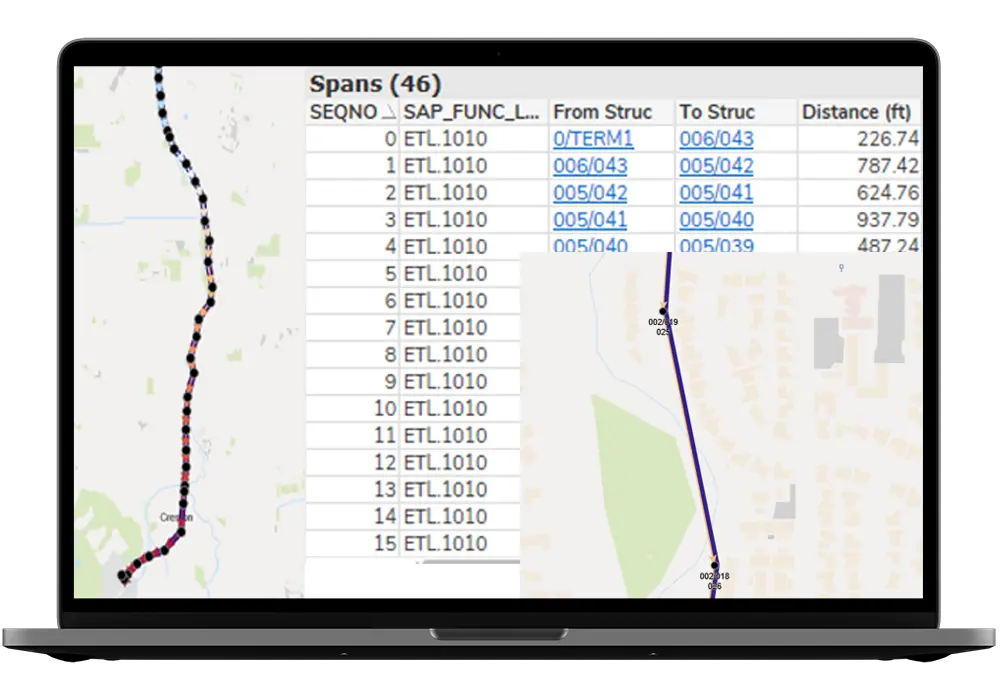In the contemporary technological landscape, data assets stand out as invaluable resources that empower companies to enhance decision-making, provide superior customer service, minimize costs, and ultimately boost revenue and profits. Does your organization actively engage in the strategic management, enrichment, and analysis of its data, treating it as a precious asset?
In practice, many companies have struggled to derive substantial value from their investments in big data. This challenge predominantly stems from a deficiency in understanding the correlation between data and operational performance.


As data volumes expand exponentially, organizations face challenges in managing, computing, and extracting value. Many struggle with where to start and how to effectively handle the overwhelming scale of data.

Creating comprehensive views of data across diverse systems and layers to facilitate decision-making often involves executing a sequence of queries, joins, and exports. Additionally, data frequently exists in slightly varied formats, necessitating a degree of transformation that can prove to be a time-intensive undertaking.

A major theme emerging in the utility industry is de-risking assets. Breaking down these silos (“Data Democratization”) and improving data quality results in dramatic increases in analytic and reporting speed, which creates a virtuous cycle for extracting value.

Integration of data sets frequently involves utilizing advanced analytic tools and enrichment methodologies, such as auditing, normalizing, correcting, synthesizing, and creating data proxies as necessary.

Management senses urgency, but relying on Data Scientists/Analysts without industry expertise dilutes insight. Training entry-level personnel is costly and slow. The solution: light-weight analytic platforms with universal access for SMEs.

Tailor integration/update frequency based on data application; daily, weekly, or less frequent updates may suffice for meaningful insights. Streamline processes by avoiding unnecessary complexities when real-time integration is not imperative.

We take pride in contributing value as a strategic partner—serving as external data analytics experts and consultants with extensive industry experience, particularly in assisting utilities in adapting and fostering sustainable change. OHROS Consulting Group excels in data enrichment by merging commonplace data sets with advanced analytical tools and methodologies. This involves auditing, collecting, correcting, and creating data tailored to each critical decision or use case. Our approach ensures a quicker path to value and at a significantly lower cost compared to alternative Big Data software solutions.
Renowned for our lightweight operational and predictive analytic applications, as well as benchmarking services, we recognize the pivotal role of “good” data. In response, we have broadened our service portfolio to assist companies in attaining improved data governance. Our initial emphasis lies in data cleansing and enrichment to enhance overall data quality.
Our digital solutions team is dedicated to identifying outliers, anomalies, and questionable data. Whenever feasible, we automate the data cleanup process through alerts, highlighting suspect events from the prior day and promptly sending them to operations for validation and correction. Additionally, we prioritize data enrichment initiatives, addressing gaps and constructing new datasets. Examples include collecting transmission structure elevations, generating substation fence shape files, and establishing a comprehensive spans database.
Many utilities employ either dedicated and expensive resources for data validation and cleanup or rely on analysts to discover and correct data anomalies during their work. The former proves costly in terms of operational and maintenance (O&M) expenses and is not always reliable. The latter, waiting for analysts to identify errors, is less effective, as correcting bad data weeks or months after the error occurs can be impossible, resulting in even more costly decisions. OHROS Consulting Group’s data solutions provide robust support for comprehensive and timely data governance, incorporating automatic data anomaly detection, alerts, and correction suggestions.
We assist in implementing automated data validation and cleanup processes for outage, asset, and customer data. This spans routine periodic validation tests, daily validations with notifications to the associated record initiators, short and mid-term outlier identification, to longer-term analysis and anomalous pattern identification. Swift correction and refinement of data enable its deployment in prescriptive and predictive analyses, facilitating faster and more informed data-driven decision-making. Leverage key data insights to drive impactful actions with our support!

A sample visualization of a client’s transmission line is presented, illustrating each structure and its sequenced path, overlaid with an OH line shape file. This visualization serves as a valuable tool for checking data quality issues. Additionally, sample data, including span length, is depicted for reference.
OHROS Consulting Group successfully constructed a comprehensive database comprising 148,000 transmission line spans within an impressive timeframe of less than three weeks. The delivered database was seamlessly integrated as a new layer in GIS for the client. This establishment of a new asset class marked a significant advancement for the utility, enabling enhanced asset risk management. It also facilitated the development of condition assessments, lifecycle strategies, and risk profiles for each transmission span. Through this initiative, we achieved:
• Documenting conductor risk involves assessing asset criticality and condition for each span.
• Assigning ROW (Right of Way) clearance attributes, structure heights, span midpoint elevations, and conductor mid-span sag as functions of circuit load, ambient temperature, and wind speed to each span is essential for measuring vegetation management risk.
• Link asset condition and vegetation exposure to consequence (river and highway crossings, schools, etc.)
• The client recognized the necessity of adopting an effective risk-based approach for prioritizing inspections and vegetation management. This realization highlighted the importance of having data on this critical missing aspect.
Copyright 2024, OHROS Energy group B.V. All Rights Reserved